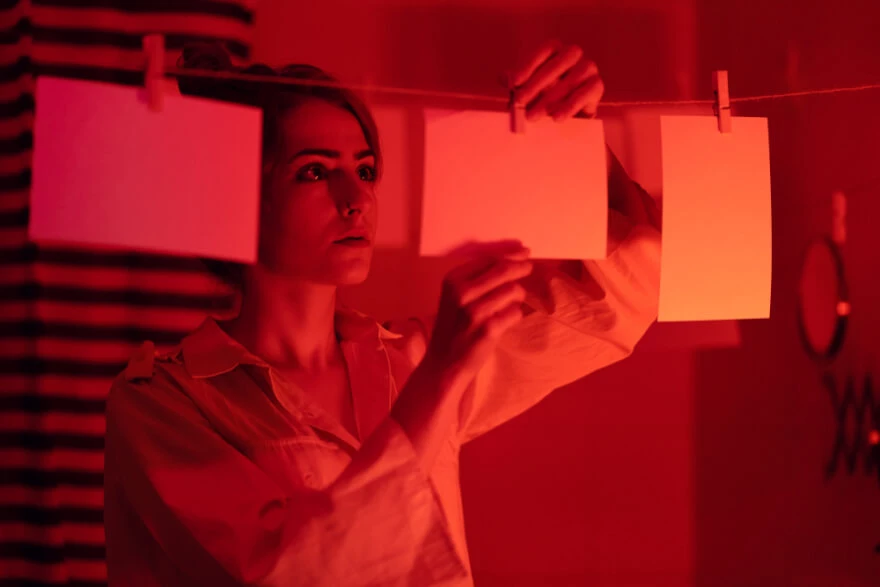How to use Lines in Photography

- Where can we find lines for photography ?
- TIPS to find and photograph lines:
- 1. Freeze the horizon
- 2. Define vertical level
- 3. Find a simple skyline
- 4. Show off curves and bends
- 5. Create own frame line photography
- 6. Study properties and shapes
- 7. Be simple and use diagonals
- 8. Remember the importance of active image lines
Nowadays everyone who has a digital camera can consider himself to be a modern expert in this art. There are many rules and standards, which are known and used only by real professionals, after endless attempts of practice and experience. Number of online tutorials and lessons tell much about plot and composition, light and contrasts, as well as posing and facial expressions for portraits. But not all of us know that 80% of image is perceived by imaginary lining, which is almost unnoticed. In theory, photography leading lines composition can be real or theoretical. A human’s brain is looking to simplify everything that we see. For example, seeing a mountain of stones, it will first of all consider it as a mountain. The fact of its consistency of many elements, various shapes and sizes is not considered by consciousness.
Lines can be both an assistant, amplifying a particular effect, and a real destroyer of the entire compositional solution.
Only photographer’s knowledge not only helps him to create bright, interesting images, but also allows to understand how the viewer will look at these pictures. It is important to consider the eye catching points, details of the image to be focused on and general perception.
Extra lines and elements outside the focus dispel attention and necessary concentration. There can be a significant decrease of interest, and the whole picture becomes boring for viewers. Such a sad result will not be corrected even with a quality retouch application. That is why it is better to start with basic understanding of a problem.

Where can we find lines for photography ?
Our fascinating nature is full of landscaping lines: growing forest is full of vertical lines, a fallen tree – a horizontal one. Leaves have excellent designs. Waves in the sand create a chic canvas of curves that can turn dull frames into a visually appealing images.
If you leave the world of nature and go to industrial world, created by human hands, you will find even more examples. People love to create them. Buildings are constructed from various parallels, and if you change perspective, you will find diagonals. Bridges, railways, and even fields contain numerous possibilities to obtain a sense of depth and infinity.
TIPS to find and photograph lines:
- Freeze the horizon
- Define vertical level
- Find a simple skyline
- Show off curves and bends
- Create own frame line photography
- Study properties and shapes
- Be simple and use diagonals
- Remember the importance of active image lines

1. Freeze the horizon
Different photographs have their own idea and plot which has to be carefully followed by every detail in a frame. Horizontal lines in photography are considered as a part of something without change, a constant moment or landscape. This is the main reason why usual panoramic scenes of nature are demonstrated along the horizon. This trick is one of the basic rules of photo art and can not be neglected, either you are professional or amateur.

2. Define vertical level
Vertical subject can be used to show tranquility and peace. Its importance in the frame is crucial for most street shots. Giving the impression of powerful leading lines, photography with vertical effect enhance a deep feeling of stability. Smart combination of several tricks can create an amazing example of how visual effects improve the overall picture.

3. Find a simple skyline
Usually seasides and beaches provide perfect horizon. Most people with every camera type consider this moment to be ideal for photo practicing. Still, there are some errors which should be avoided. This simple skyline is so easy to be captured, but it has to be perfectly straight. Otherwise the final result will transmit tension. In case if the author is looking exactly for such an effect, then there is no better solution than this. When it comes to making a complex image with some other items in the frame, like mountains and trees, which cover the skyline, than it is a good idea to use a tripod. Most natural landscapes do not appear clear and well distinguished.
Horizontal frame makes objects visually slightly wider, and vertical pulls them up. Focusing on certain accents and adding various elements will contribute to making the photo much stronger. Consider this precious help of additional props to improve the picture without long post-processing work.

4. Show off curves and bends
Talking about soft bending, unique effect can be created by S-shaped frames and designs. Because only this form can be used to enhance both natural and artificial effect in the same time. It all depends on bending level. For example, mountains on the horizon, the river bend or human body, which is also called as a beauty line. Slight bends are perceived as beauty lines. The subconscious mind associates them with curves of the body.

S-shaped line has an advantage over straight options. Bends usually make part of alive world, so these lines bring life and beauty to a photo.
5. Create own frame line photography
Some images can not be imagined without the appearance of unnecessary objects. Power lines or a aircraft trail in the sky can spoil the picture or on the contrary, decorate it. Every time it depends on composition and the proper use of each line in your disposal. There are elements which can be used for a specific purpose to demonstrate or hide another point of a picture. Similar objects can create a rhythm. And in relation to portrait photography, it can be useful as a particularly strong guide. Rhythm is a serie of repetitive (similar or identical) objects in a frame: trees, columns, chairs and even cars.

6. Study properties and shapes
Classic lines do not cause tension or any sharp emotions. Everyone understands that these are natural directions, which mainly convey the static nature of objects. Another approach is used to demonstrate a curved element. Its curvy form makes an impression of unnatural impact by human or nature. Depending on bend level a human eye perceive photo elements as artificial or natural.
Lines with a small bend are considered to be stable.
Lines that strongly deviate from horizontal or vertical direction appear to seem unstable. The most unstable lines are those that have a 45 degree angle and grids.
Square frame is a possibility to express calm and peaceful photo.
Upward triangle also forms a neutral position, but triangle is dynamic and it makes all the image quite emotional. Downward triangle means extreme instability and maximum emotional theme. If the triangle is directed downwards, it adds speed, lightness and underlines actions. If it is directed upwards, resistance is created.
Circle personifies harmony and balance, besides this, it concentrates attention on itself.

7. Be simple and use diagonals
Diagonals are among the top used tools to show movement and infinity in a frame. Its importance is essential for every type of photography. It is a line that goes from one edge of the image to another. It can be easily obtained even from horizon. You just need to rotate the camera at a certain angle.
Diagonal leading lines photography definition is an option to add dynamics using various directions, from left to right or right to left. People from different parts of the world may perceive differently diagonal directions due to their mentality and culture.

8. Remember the importance of active image lines
It is well-known that a person’s eye does not stop when looking at pictures. It moves from one active point to another. Movement is carried out along the lines, demonstrated on each picture. The eye captures the most contrasting areas of the image or the most unusual bends, grids and contrasts.
Viewer can be guided not only by real lines. It also captures silhouettes, built on the basis of contrasts, colors and contours of objects. As it was already mentioned, a pile of objects in the form of stones creates a mountain silhouette.
When it comes to portraits, eyes, lips and nose become those active points of the image. Only lines can connect those important points together, creating a unique image, which will make viewer watch the whole picture.

In practice, knowing how people watch every single picture, helps us to construct a necessary image with a perfect emphasis. It is possible to create a more advantageous composition. For example, if the picture shows two people who are looking at each other, then active points will be concentrated on their eyes, and an imaginary line will connect those eyes. If there are no brighter points on the background, the viewer will not pay attention to it.
Co-founder of RetouchMe. In addition to business, he is passionate about travel photography and videography. His photos can be viewed on Instagram (over 1 million followers), and his films can be found on his YouTube channel.
Moreover, his profile is featured on the most popular and authoritative resource in the film industry — IMDb. He has received 51 international awards and 18 nominations at film festivals worldwide.

with RetouchMe














